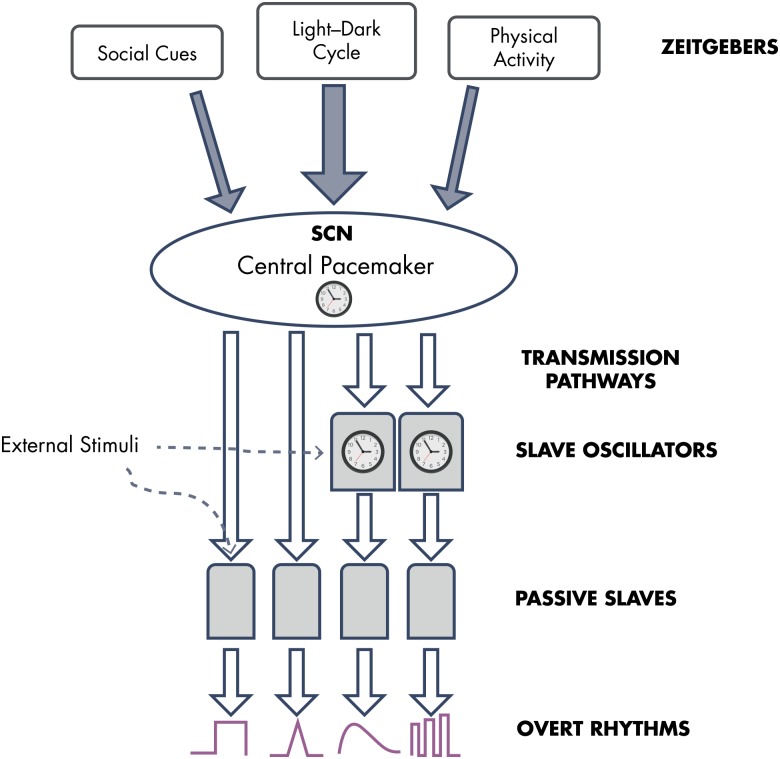Figure 1.
Schematic conceptual representation of the mammalian circadian system as it was understood circa 1990. A circadian pacemaker located in the SCN of the hypothalamus was widely thought to be the only self-sustained 24-hour clock and to act as master pacemaker for the entire organism. The molecular mechanism generating the self-sustained central circadian signal was not known. The light-dark cycle had been recognized as the main external synchronizer (zeitgeber) of the master pacemaker, but inputs from social cues and physical activity had also been identified. A few peripheral tissues—including the adrenals—had been found to generate damped oscillations that require input from the master pacemaker to be sustained (“slave” oscillators). Most peripheral tissues were considered not capable of generating self-sustained circadian oscillations and were thought to be passively entrained by the master pacemaker (“passive slaves”). The 24-hour rhythm of circulating GCs was seen as an “overt” rhythm reflecting central circadian timing, with inputs modifying its wave shape elicited by external and internal stimuli. [Redrawn and modified from E. Van Cauter and J. Aschoff: Endocrine and other biological rhythms. In: DeGroot LJ, ed. Endocrinology. Vol 3. WB Saunders; Philadelphia, PA: 1989; 2658–2705 (19), with permission.]

